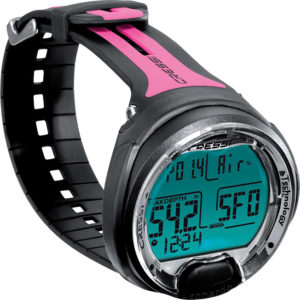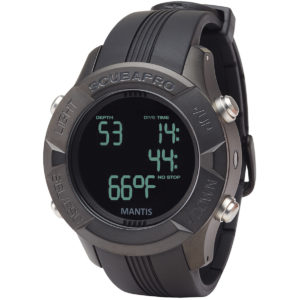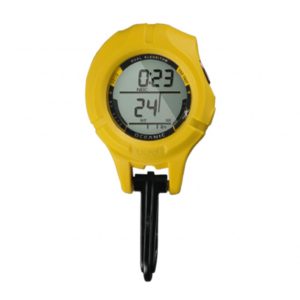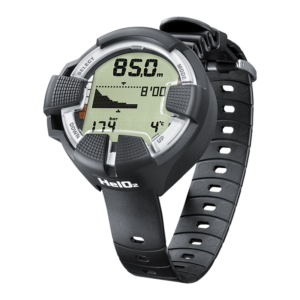Dive computers are an equipment staple these days. Instructors rightly often advise new divers to make a computer one of their first purchases. But what should you choose if you need a computer but don’t want to take out a second mortgage to pay for it? While not all of these are the cheapest available, they are among the best choices based on the kind of diving you want to do. The first and the last in the list are available in a console if you’re not the wrist-mount type. With that in mind, here’s a run-down of some of best budget dive computers for various needs.
 For the new diver: Cressi Leonardo
For the new diver: Cressi Leonardo
A dive computer should be one of your first purchases after your initial dive course. But, as a new diver, you shouldn’t buy a high-end, super-specialized computer until you know a bit more about what kind of diving you’ll love. So a simple, budget-friendly computer like the Cressi Leonardo is a good option. It’s simple, easy to use, and even accommodates nitrox up to 50 percent. This makes it versatile choice that can progress with you if you venture into that kind of diving.
 For the advanced diver: Scubapro Mantis 1
For the advanced diver: Scubapro Mantis 1
The Scubapro Mantis 1’s compact design features capabilities for scuba, gauge, freediving and even closed-circuit rebreather diver. It also has a predictive multi-gas algorithm accommodating up to three gases, including nitrox. It also features heart rate monitoring, with the optional heart-rate monitoring chest strap, allowing it to factor exertion into your nitrogen load. The computer can double as a running and swimming watch, giving you duration of activity and heart rate. For swimming, it offers stroke count and distance covered.
 As a backup computer: Oceanic B.U.D.
As a backup computer: Oceanic B.U.D.
While any of the computers on this list could work as a backup, the B.U.D. computer from Oceanic is specifically designed for the purpose. Many divers will roll their “old” dive computer (provided it still works) over as backup when they buy a new one, but if that isn’t an option, you may need to buy one for the purpose. A small, lightweight computer, and without a strap to save bulk, this will fit into any BCD pocket. It has a built-in clip so you can attach it to a D-ring, too. In spite of its low cost, it has Oceanic’s dual algorithm setup and handles nitrox up to 50 percent.
 For the tech diver: Suunto Hel02
For the tech diver: Suunto Hel02
The Suunto Hel02 is a relatively affordable (retailing at about $500), dive computer for what it can do. While it’s by no means “cheap,” you’d be hard-pressed to find a computer with Suunto’s build quality, and one that handles air, nitrox and trimix for that price. Sure, the Hel02 has a few years on it, and it shows in the design. Compared to newer tech computers, you won’t get a widescreen color display, nor wireless data transfer to a laptop. But what you are getting is a solid algorithm, ability to switch between up to eight gasses, advanced logging and planning software, and an almost bulletproof build quality. And if you’re serious about tech, most agencies recommend that you have two computers, using one as a backup. And two of these would set you back less than some of the most feature-rich tech computers out there.
When selecting a computer, it’s worth noting that all computers made by reputable manufacturers are safe. In fact, most use the very same computer algorithm to calculate your saturation, and with that, dive time and surface intervals — the key feature of any dive computer. So picking one of these budget dive computers will not make you less safe in the water. So what are you buying when you buy a more expensive computer? Typically you’ll get features like better displays, air integration, and other nice-to-haves. And while you don’t necessarily get those with the computers in this list, they do feature all the basic options you need, with an agreeable price tag.





